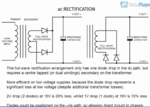Easy peasy
Advanced Member level 6
There appears to be very little to stabilise the output of this osc, similar osc designs have a lamp or other variable R device ( or sloped knee zener ) to provide a feedback effect to keep the output at a definite magnitude - this is not very well done for this ckt ...

